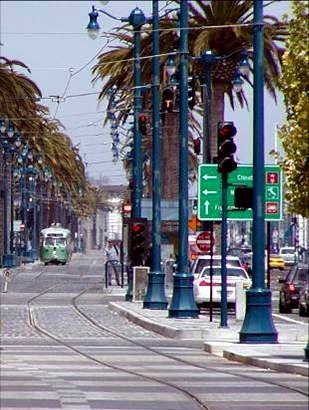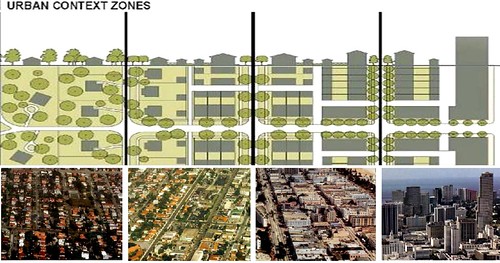Texas (!) becomes first state to adopt new smart street rules

Posted December 10, 2009 at 6:01PM
Texans are going to get more walkable, transit- and bike-friendly streets in their cities, towns and neighborhoods, thanks to an important new decision by the state’s Department of Transportation.
In particular, Texas has become the first state officially to adopt a new, comprehensive set of progressive street design guidelines written by the Congress for the New Urbanism and the Institute of Transportation Engineers. The new manual, Context Sensitive Solutions in Designing Major Urban Thoroughfares for Walkable Communities, which has been years in the making, advances the successful use of appropriate and thoughtful solutions in the planning and design of urban roadways for walkable communities.
In a story published in New Urban News and reported by David Crossley on the Houston Tomorrow website, Fort Worth planner Scott Polikov writes that the state DOT has revised its project development process to require that context sensitive design be considered in all project evaluations. This is a pretty big deal: traditional street planning and design has focused almost exclusively on the function of the roadway in transporting vehicles efficiently from one place to another, even in the midst of neighborhoods whose character and hospitality to walkers, cyclists and transit users can be profoundly compromised in the process. Polikov stressed the importance of the change to the Houston Chronicle, in a story reported by Carolyn Feibel:
“If the nearby land use is considered at all, it's mostly in a reactive mode, as engineers strive to minimize noise and other negative impacts. The new approach,
known as ‘context sensitive,’ gives TxDOT engineers a method for evaluating a road's surroundings before they design and build it. They can look at the nearby street grid, local economic plans, the recreational or commercial situation and the potential walkability of an area. Previously, TxDOT ‘did not have the tools available to think beyond the curb line,’ Polikov said.
“The new process should also energize the local tax base along the road, Polikov said, because if a road is designed to fit better with a local neighborhood, it will attract better development, more attractive housing and more shoppers and residents.”
The result should be better sidewalks, more appropriate vehicle speeds, safer and more frequent pedestrian crossings, increased visibility between drivers and other users, landscaping (including street trees) that is both beautiful and functional, safer intersections, green stormwater management, and other aspects of “complete streets.” In many ways, the new CNU/ITE manual gives specific engineering and process expression to the policy aspirations of the complete streets constituency.
As this is partly a CNU product, it comes as no surprise that much of the guidance is transect-based, offering differing prescriptions for differing neighborhood environments comprising urban core, urban center, general urban, and suburban zones. CNU has a page with links explanatory material, and there is also a complete and well-illustrated slide show on the standards developed jointly by CNU and ITE. It’s pretty nerdy stuff but, if you’re a reader of this blog, chances are that, like me, you’re not too far removed from that category. Congratulations and thanks to TxDOT, CNU and ITE for improving the walkability of our cities and towns.



